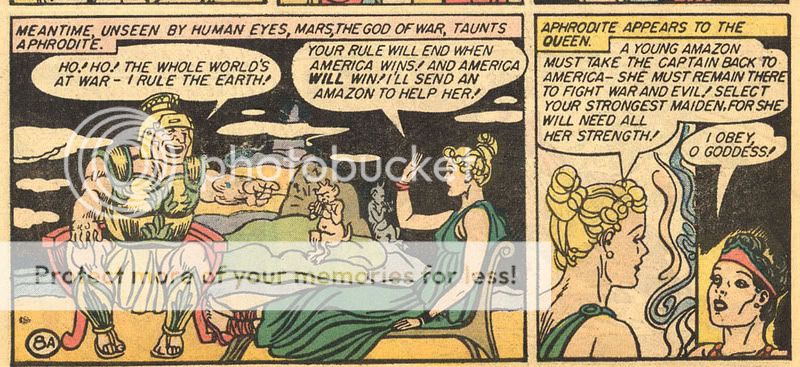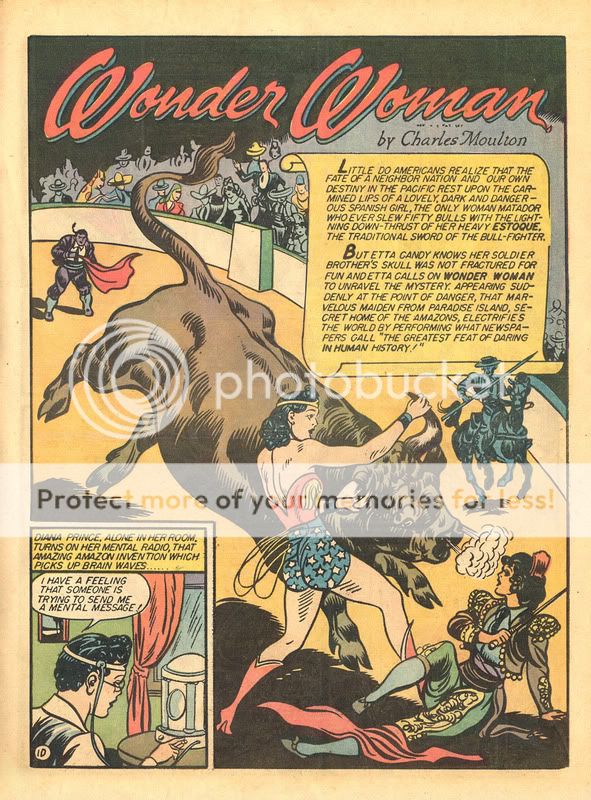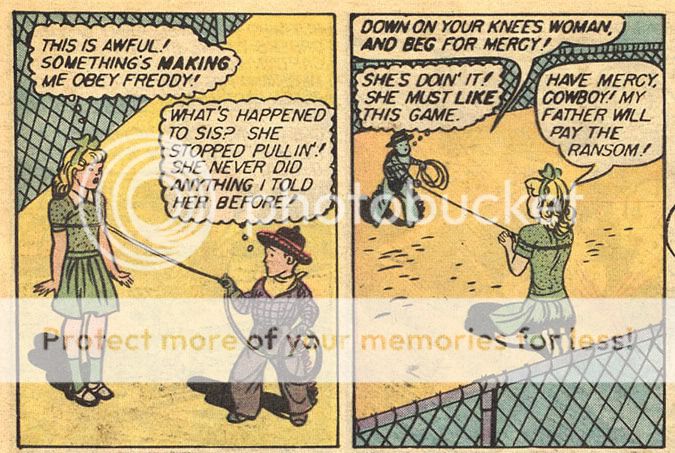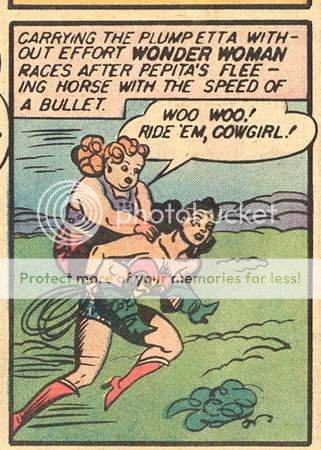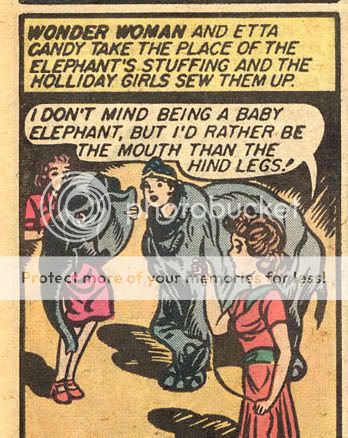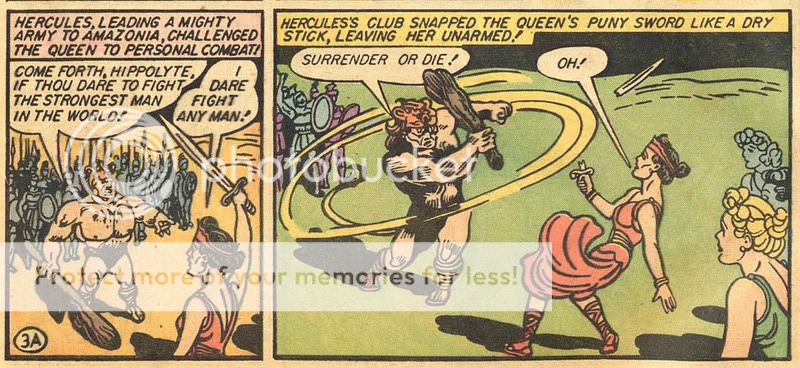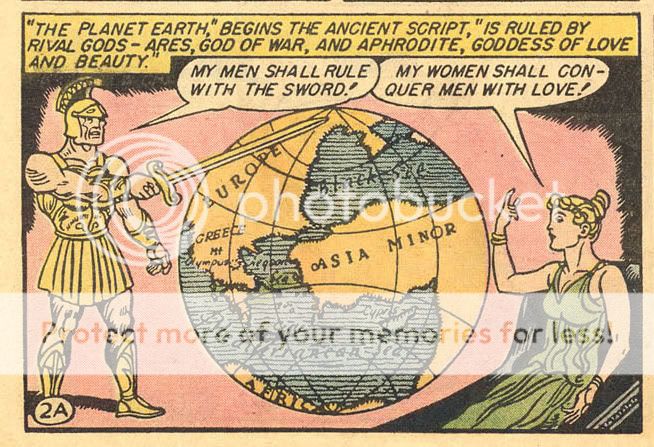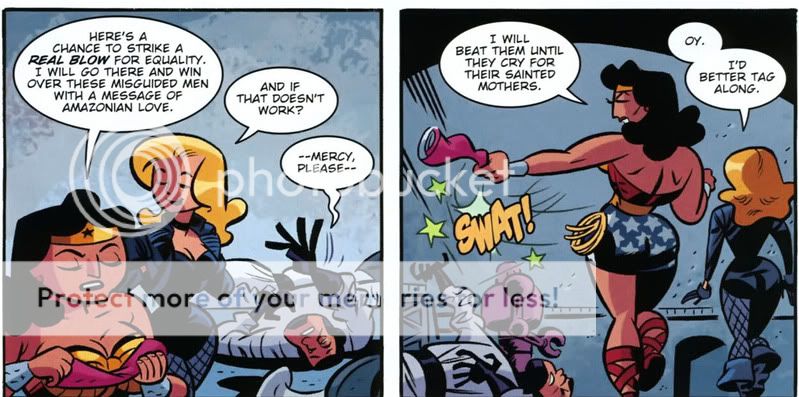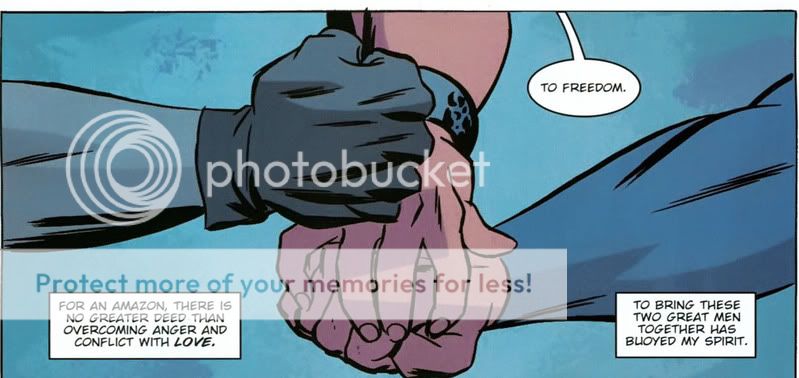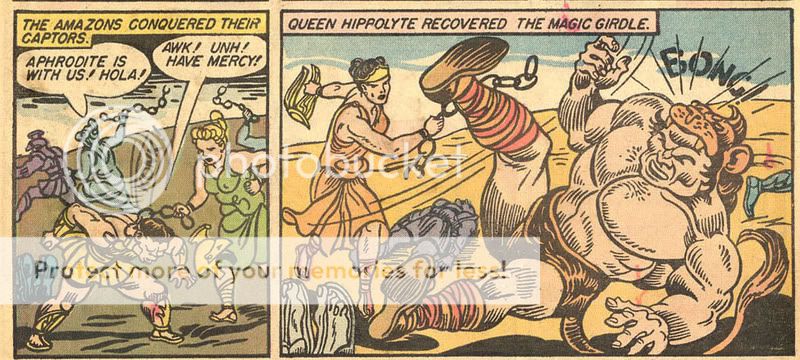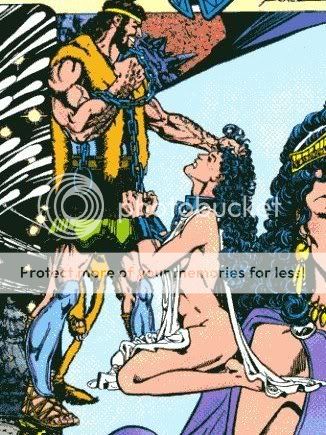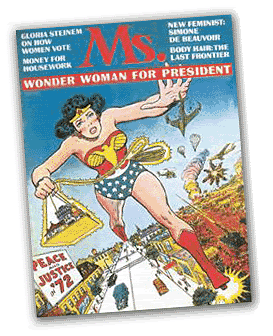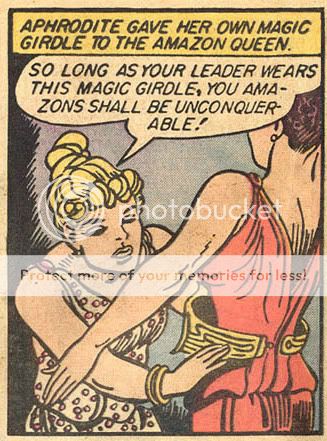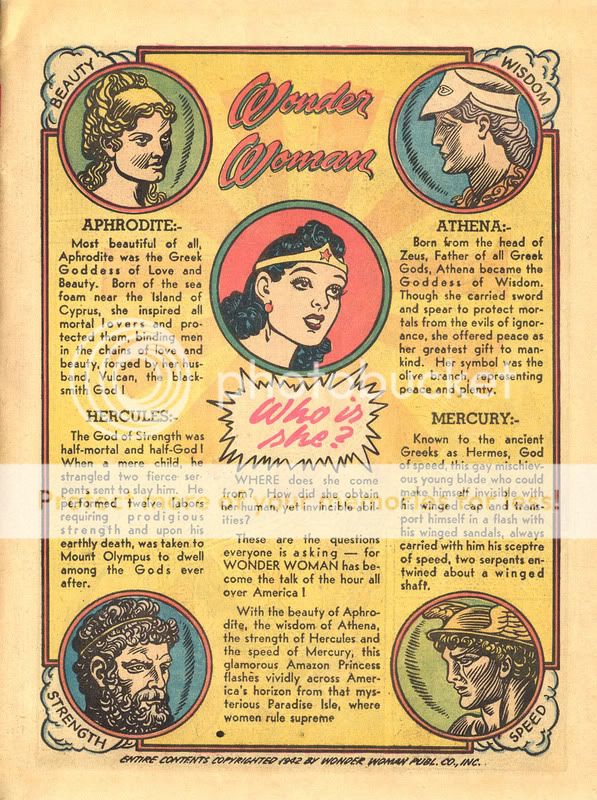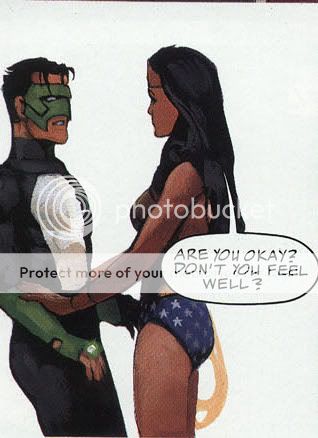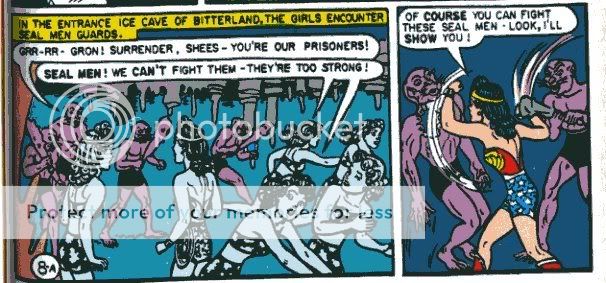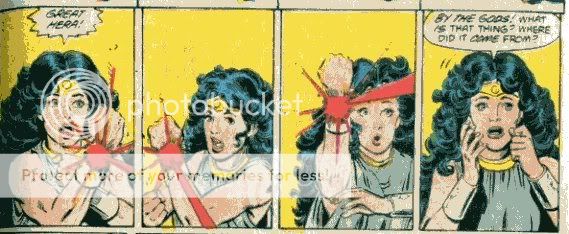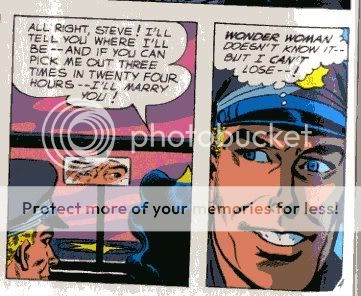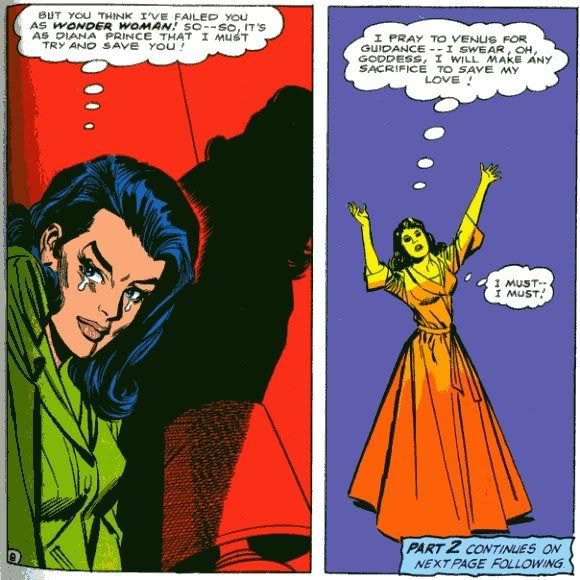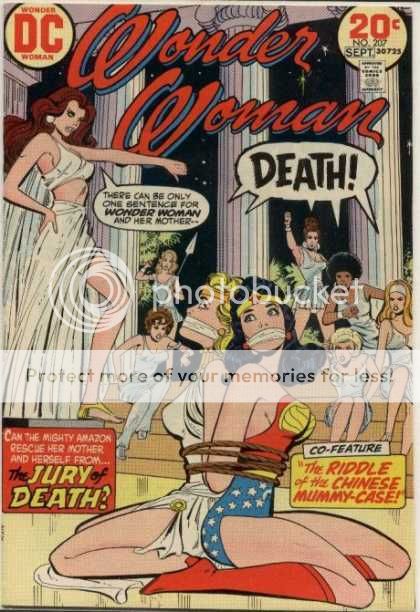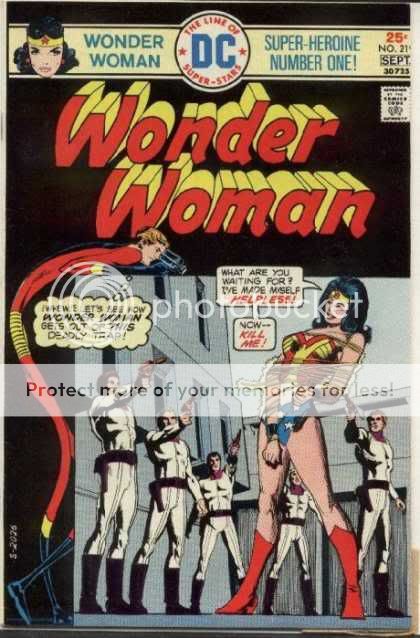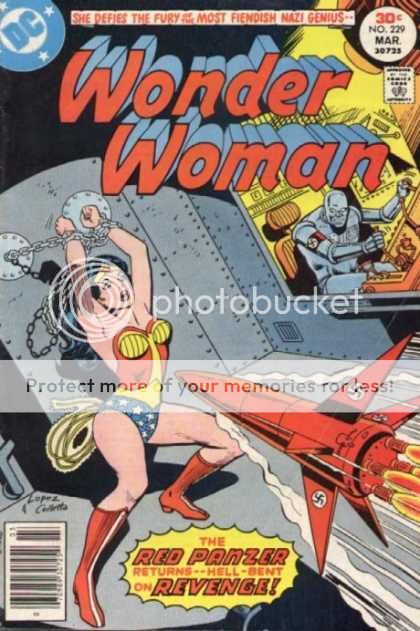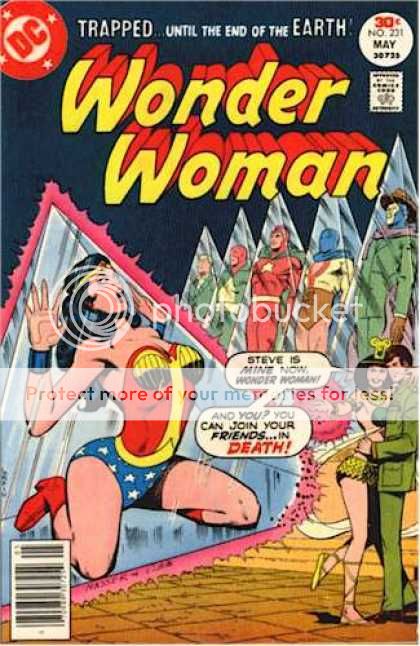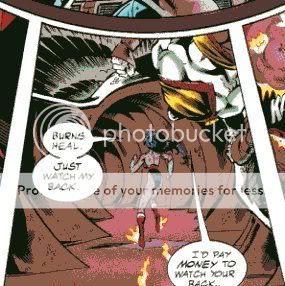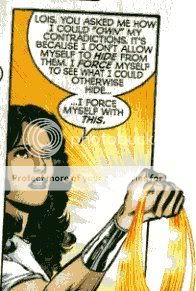Previous posts on WW in this series: One Two Three Four Five, Six, Seven.
______________________
So yesterday I started talking about the first issue of Wonder Woman, then got distracted by Darwyn Cooke and Ms. and so forth. But we’ll try again.
So one surprising thing about WW #1 is that, in Moulton’s telling, WW’s mission actually makes sense.
As I’ve mentioned before in this series one of the perennial problems with Wonder Woman is that her mission to man’s world is always really stupid. Has she come here to lead us to peace? To be an international UN do-gooder? To hit lots of bad guys and flirt with Superman? Any way you look at it, none of it quite rings true.
But in Moulton’s telling, her mission is pretty straightforward, as Aphrodite explains.
Wonder Woman is going to man’s world to help America win World War 2. That neatly resolves the peace/battle contradiction; the forces for war are the Axis; they must be defeated to restore peace, so an Amazon will journey to the homefront to restore love and amity by slugging evildoers. Niebuhr would be pleased.
This, of course, also resolves the difficulty of WW’s costume. If she comes from the back-end of the mythologicalverse, why is she wearing the stars and stripes? Well, logically enough, because she represents America not as the embodiment of national ideals, but as the embodiment of international and even universal ones. World War II was probably the one time in history where this could actually make sense; there was really a case to be made that America (whatever its own sins) was, at that time, the last best hope for civilization and peace.
Since that moment, of course, it’s been a lot harder to argue that the interests of America and the world align — but WW has been stuck with that costume. Not sure how Moulton handled it after the war ended (I’ll have to look into that) but other creators have had difficulties. George Perez did some sort of utterly ridiculous retcon, if I remember precisely, where Steve Trevor’s mother had come to paradise….you know what, forget it. The point is you end up on the one hand, with moments like this from Phil Jimenez, which egregiously beg the question:

Please Keep Your Eyes Off the Eagles
Or with efforts like this, from the Playboy shoot
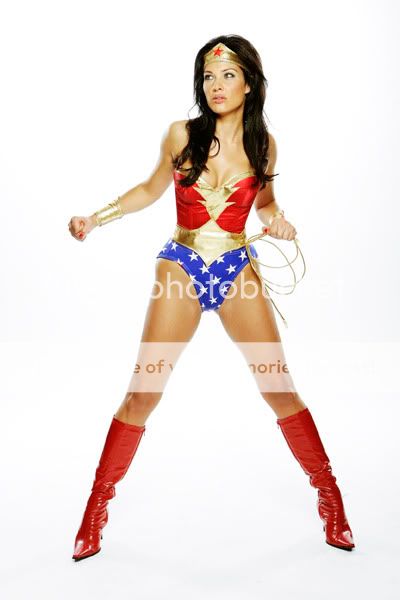
Please Keep Your Eyes On the Stars
Playboy actually used these Wonder Woman photos to illustrate an essay on “American Sensuality” or some such. Not sure how sensual that image above is supposed to be exactly; it really looks more jokey or parodic than sexy; Fallon’s intense “I’m fighting for truth, justice, and the American Way” is pretty thoroughly contradicted by the (literally) painted-on costume, which is even more silly-looking in real-life than on the page. In fact, it seems likely that that’s the point; Playboy isn’t using Wonder Woman to make fun of feminism; rather they’re using trite misogyny to poke fun at America in a bland, we-lived-through-the-60s kind of way. For Moulton, a woman was the perfect representative of the U.S., since he saw the U.S. as engaged in a fight for peace. For Playboy, a sexy woman wearing the flag is just the level of edgy irony they’re looking for; they can claim a sort of jokey yes we do, no we don’t pride in America. It’s all more or less predicated on the idea that a woman being strong or representing America is in itself funny-quaint-snicker-worthy.
[Update: Matthew argues out in comments that this isn’t part of the Playboy body paint shoot; it’s just Tiffany Fallon wearing a Wonder Woman costume. I think that’s right; it was used to illustrate this article about Fallon and Playboy. I’m not sure if it was in the original mag or not, though obviously it’s somewhat related. More evidence for the ongoing “Noah doesn’t know what he’s talking about” thesis, though.]
Playboy isn’t alone though. Jimenez also tries to distance WW and America, as do most recent takes on the character. One of the (many) problems with Greg Rucka’s Hiketeia is that its all about WW’s Greek heritage and mythological connections, and she’s talking to the furies and agonizing about ancient ritual — and she’s wearing star-spangled underoos. It’s hard to maintain the profundity…unless, like Moulton, you are willing to link the U.S. to the mythological, and happen to live at a historical moment when doing so was at least somewhat defensible.
It’s interesting that Captain America has kept his close ties with Americanism, while WW has spent much of her career trying to avoid the implications of her costume. Probably it’s partly because Cap has a much less complicated narrative (he fights Nazis because he loves America, as opposed to because he loves peace.) I wonder if it’s also because, or related to, some difficulty in imagining, or figuring out what to do with, female patriotism. It’s also interesting that the (relatively) politically engaged Denny O’Neill is the one who took WW out of the stars and stripes. I mean, there are a lot of reasons to ditch that costume, but…did he dislike the patriotic connotations?
__________
Anyway, more next week, hopefully; magic lassos and why Moulton’s characterization of Diana is still the best….
Update: Last Wonder Woman post here.

